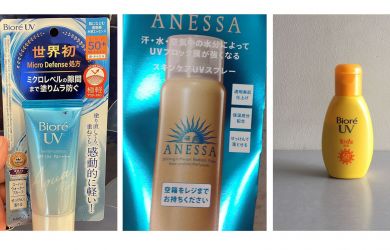
February 25, 2010
Taito Designers Village
Young creators rule the school in Tokyo’s shitamachi
By Metropolis
Originally published on metropolis.co.jp on February 2010

photos by Rebecca Milner
Taito Designers Village packs a lot of old-school charm—literally. It’s housed in an elementary school rendered redundant by changing demographics. The walls still have murals painted by former students, a parking lot retains the outlines of a running track, workshop space is furnished with science-lab desks, and the sinks lining one of the hallways sure weren’t designed for grown-ups. “The toilets are really small too,” says Ayako Takagi.
Takagi is my guide for the afternoon, introducing me to the facilities and faces of the workspace. Dressed in jeans and a t-shirt, her long hair capped with a bright turquoise hat, she possesses both a personality and a face that, had she chosen a different path, could easily have landed her on the cover of a fashion magazine. Instead, inspired by her jewelry-designing parents, Takagi makes character art and figures under the brand name Uamou. She’s part of the second generation of designers who have been selected for a three-year, low-rent residency at one of the 19 studios that comprise Taito Designers Village.

According to Incubation Manager Jun Suzuki, the Village was established by Tokyo’s Taito Ward to support promising new creators while promoting the ward’s history as a center for manufacturing and craftsmanship. In addition to helping the resident designers surmount the hurdles of starting their own companies, Suzuki introduces them to local manufacturers. The result is that a number of the works conceived in the Taito Designers Village can claim to be “made in Tokyo.”
In addition to enviably cheap rent (Takagi pays around ¥40,000 a month for her 20m2 studio), the designers say the built-in community is a big part of the draw. “I thought if I were surrounded by designers in different trades, more opportunities would open up,” says porcelain maker Yumiko Iihoshi. The only maker of decorative arts in the building, she has a kiln in her 40m2 studio.
In order to get past the tough screening process, designers must have less than five years of independent experience, a strong portfolio, and show business acumen in their written proposal for a three-year tenancy. The result is a talented and ambitious bunch, a handful of whom are starting to get name recognition, such as Hiroko Takahashi of the modern kimono brand Hirocoledge, and experimental Japan Fashion Week designer Yoshikazu Yamagata of writtenafterwards. Start-up media Fashionsnap.com also has its office there.

While not mandatory, the ward hopes that designers will stay in the neighborhood and open up shops that might draw young consumers to an area characterized by an aging population. A number of graduates of the program have: Yukiko Ishizuka (Kanmi), Yuichiro Murakami (m+), Kyoko Hayashi (Coquette Coquette) and Masako Unayama (Syuro) have all set up shop in Taito-ku. Roughly half of the current designers have also moved into the neighborhood, both for convenience and the relatively low rents.
Moreover, the newcomers are beginning to warm to the charms of this traditional part of the city. Kanagawa native and stationery designer Kinue Ooneda (of design duo Yuruliku) says, “Taito ward is right in the middle of the city, yet it’s so quiet. There’s so much old Tokyo culture remaining here that you don’t see in other parts of the city.”
Takagi is the one Taito-ku native in the building, living only a five-minute walk from her studio. Having grown up in the area, she remembers when the Village site was still a school. “Young people go shopping in Shibuya, Harajuku and Aoyama,” she says. “Designers’ offices are mostly on the west side of the city too. This [Taito ward] is the area where the people who make things tend to live.”
2-9-10 Kojima, Taito-ku. Tel: 03-3863-7936. Nearest stn: Shin-Okachimachi. www.designers-village.com







